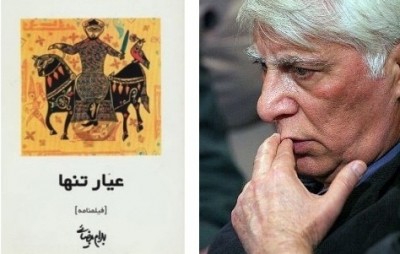The historical resources of the Mongol era introduce us to social changes developed by political agents and structures; however, learning about social changes in non-political classes of society is possible through literary resources. Applying his strong insight and imagination, Bahram Bayzaie illustrates some scenes of Iranian society on the eve of the Mongol invasion.
We can gain a deeper of Iranian medieval history by studying dramas and movies. The scenario “Ayyar-i Tanha” (lonely champion) by Bahram Bayzaie presents the Mongol invasion as the main part of Iranian medieval history. Focusing on the cultural and political conditions of Iran on the eve of the Mongol invasion, the author leads the attention of the audience to the internal causes of Iranian failures.
Escaping from enemies, Ayyar is saved by an old man who has pleasant memories of Ayyaran (champions) and has written many books about them (pp. 9-10). Comforting the Ayyar, the old man mentions that he wants to name his upcoming book “Ayyar”: “Don’t worry…This inauspicious dog {Chengiz} will never penetrate even the first fence. God has guaranteed Muslims from kafer {infidels}’s slaughters… Where is Temuchin now?” (pp. 11-12). The old man can never believe that the Mongols are conquering Iran.
Unlike all the old man's hospitality, the Ayyar sexually assaults the old man’s daughter when she is getting married. The old man cannot believe Ayyar’s behavior, “You are Ayyar, aren’t you?” (p. 12). Then he sets fire to all his writings since they are not based on the realities of Ayyars (p. 22).
The old man’s daughter who cannot return to her previous life accompanies the Ayyar to inform people that the Mongols have invaded Iran (p. 20). The more the scenario carries on the more positive aspects of the Ayyar character appear. He not only falls in love with the girl and saves her life several times, but also he does his part to save the lives of other people who do not know about the Mongol invasions. As the scenario concludes, the Ayyar stands alone against the Mongols (p. 102).
With a variety of characters, Bayzaie criticizes political agents and scholars who do not attempt to save their territories. Sultan Muhammad Khwarazmshah is escaping from the Mongols anonymously, “This secret must not be revealed. It’s commanded that no one must know where the Sultan’s going” (p. 42).
However, the scholars are disputing about trivial issues and even wishing the Mongols to slaughter all those scholars who think differently, “- What are you looking for in the book of wonders?
– The story of the Mongols. It’s said that they have turned libraries into stables. They are sewing tongues and burning books and breaking pens; Oh! They are the troops of ignorance.
– Who can judge whether they have done any right or evil? I have seen books that had to be burned.
– I’m a bureaucrat, so I don’t deal with breaking and burning.
- You seem to be Heterodox in your words. Don’t speak like philosophers and sophists. I wish the Mongols to come and vanish away all these skeptics” (p. 71).
Ordinary people are also criticized for relying on spells and praying to survive (pp. 41-42). “Ayyar-i Tanha” is narrating not the Mongol invasion, but the conditions of the Iranian society that led to Iranian failures.
Maryam Kamali
Bayzaie, Bahram (2010). Ayyar-e Tanha, Tehran: Roshangaran.
